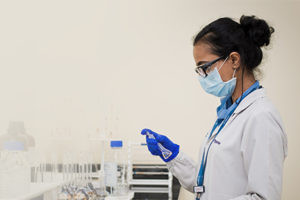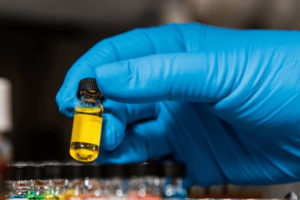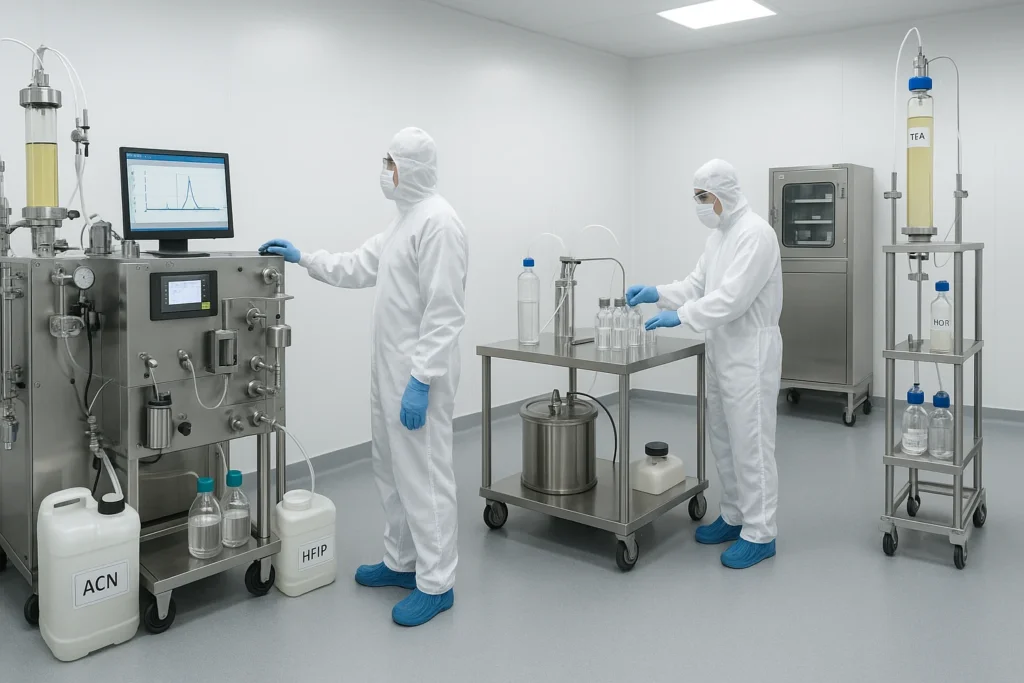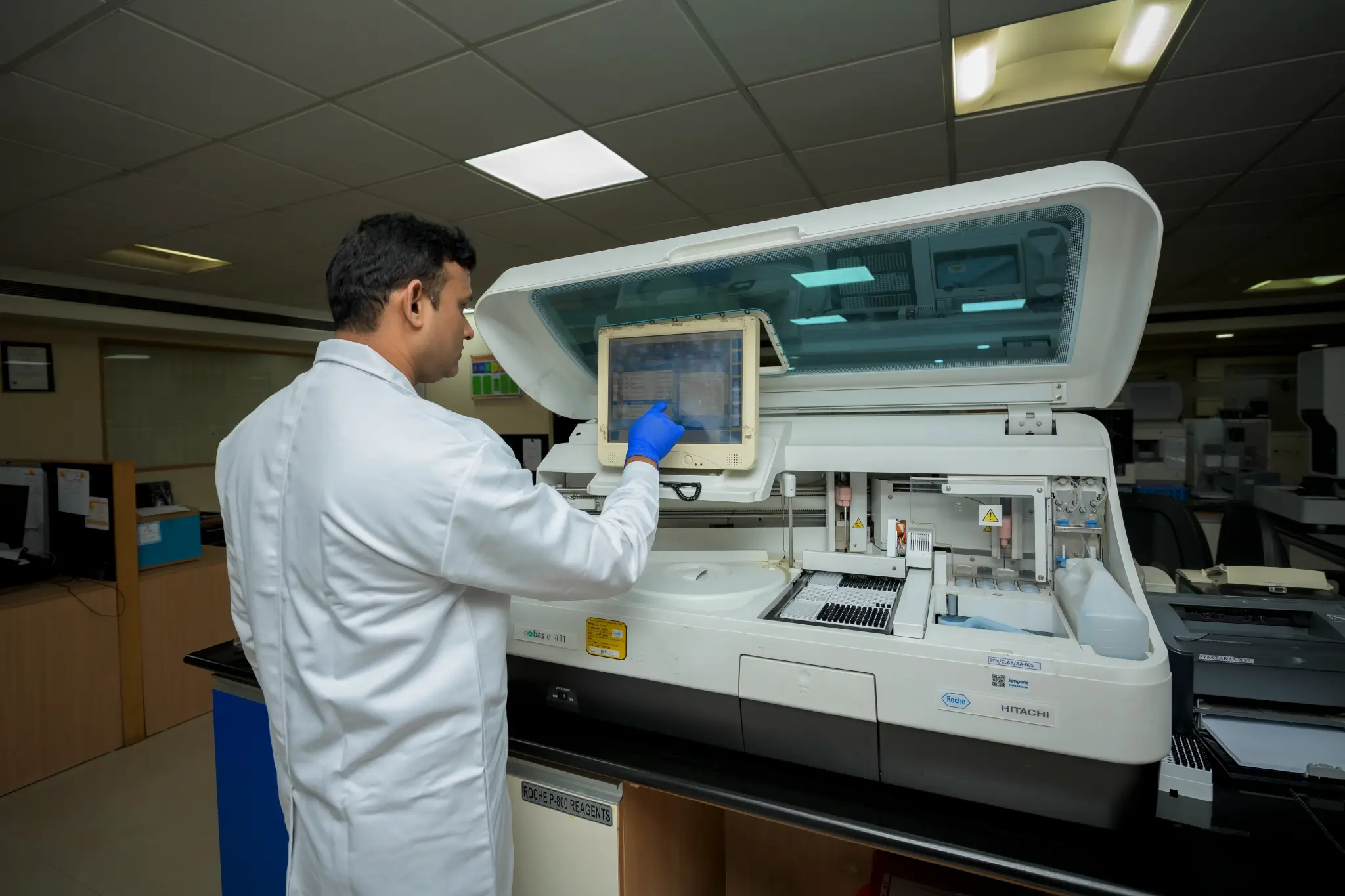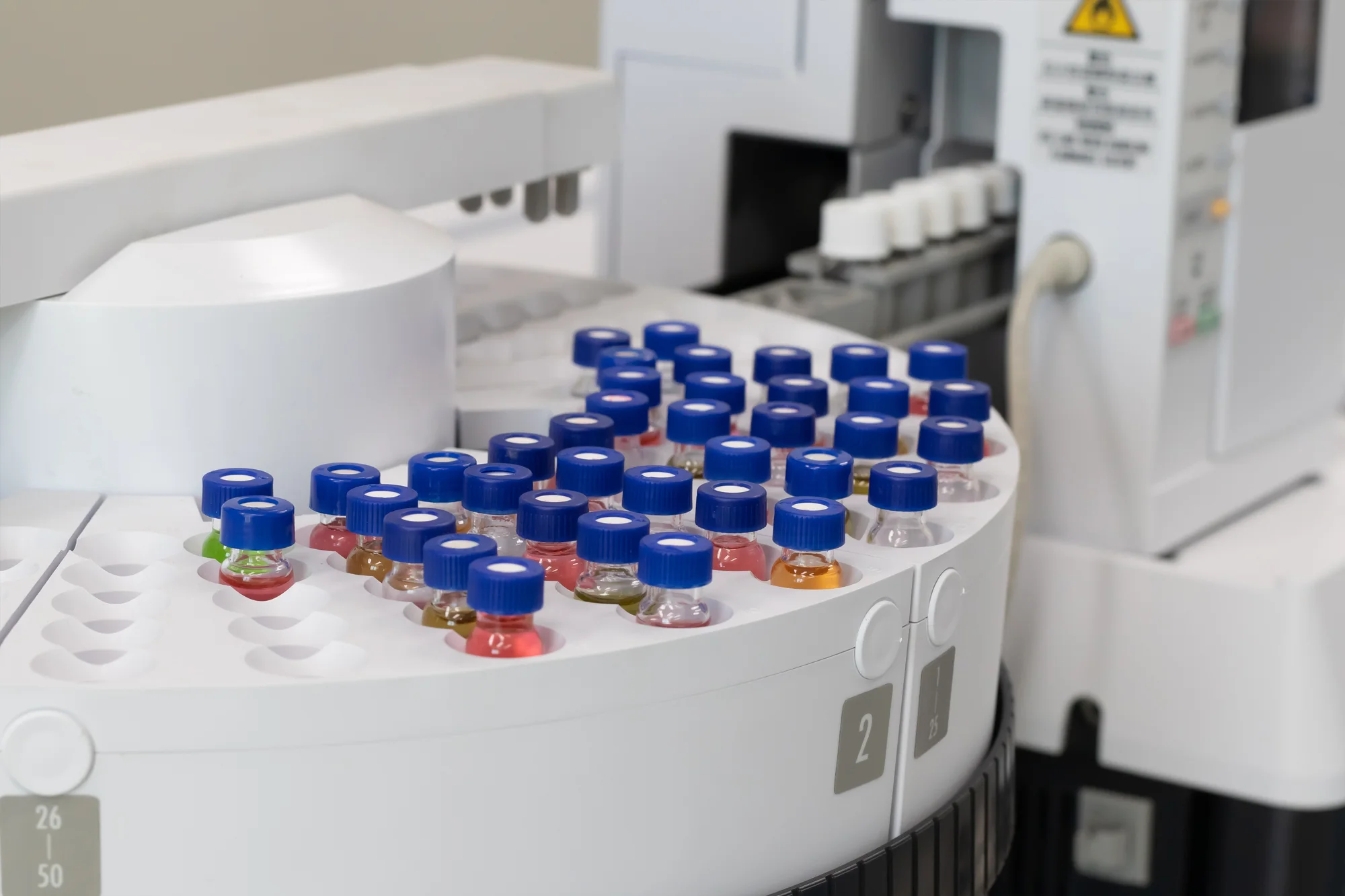Why scale up looks simple but is not
Peptide therapeutics are advancing rapidly across metabolic disease, oncology, and infectious disease. At small scale in the laboratory, peptide synthesis can appear straightforward. A suitable resin is selected, a solid phase peptide synthesis procedure is followed, the peptide is cleaved, the crude material is evaluated, and peptide purification is conducted to obtain a clean vial. The real challenge begins when the same steps must operate as a controlled peptide manufacturing process for clinical or commercial supply. This article explains the underlying science and shows how an integrated partner such as Syngene combines synthesis, analytics, engineering, and quality to deliver reliable cGMP peptide synthesis, consistent with their peptides overview and peptide synthesis capability.
Sequence risks that grow with batch size
A sequence that performs well at tens of micromole may behave unpredictably at multi gram or kilogram scale. Coupling efficiency that appears acceptable with high reagent excess can decline when equivalents are reduced to control cost and impurity burden. Hydrophobic stretches and beta sheet prone motifs increase on resin aggregation as scale increases. Protecting group strategies that are acceptable in a small flask can generate additional side products in a production reactor. The order of difficult couplings also influences outcomes. Changing the activator or making a small adjustment in solvent ratio can alter deletion profiles. The principles sound simple, yet they are difficult to correct late in development. Hence, the manufacturer should plan for these risks early in peptide synthesis
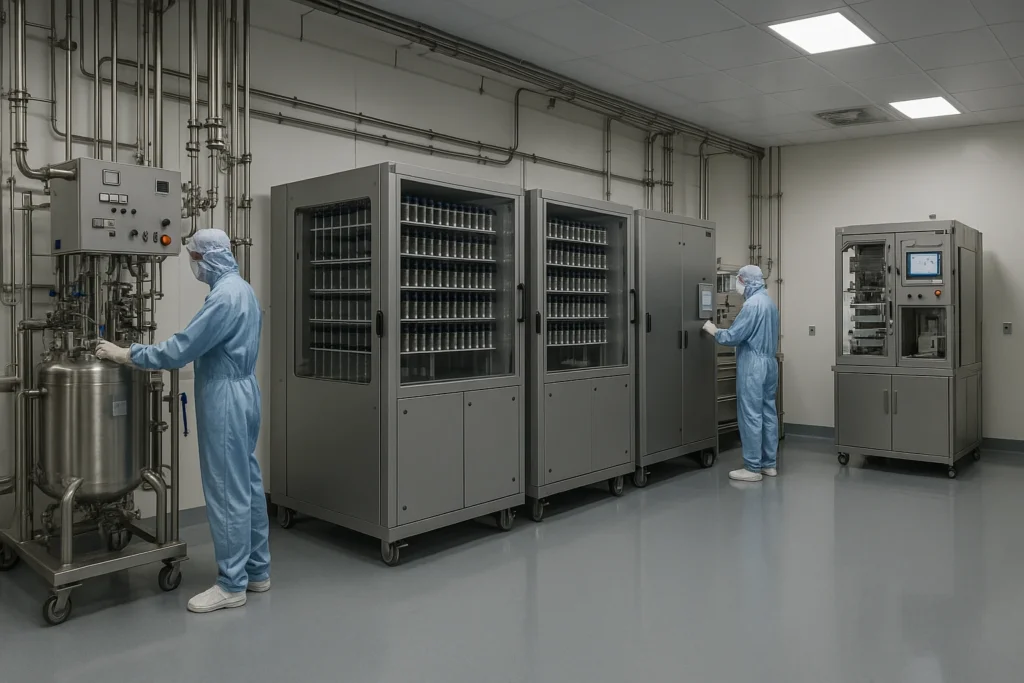
Solid support and solvent choices decide half the outcome
Resin selection determines loading, swelling, and diffusion characteristics. Using a lower loading can reduce on resin aggregation, although it increases solvent consumption. Solvents are not merely carriers. Water content and trace amines in DMF, as well as properties of greener solvent options, can change reaction rates and promote side reactions. At larger scale it is necessary to consider solvent recovery, worker exposure, and overall process safety. Exotherms during activation, gas evolution during quench, and pressure build in transfer lines require measured safety data. These factors are central to cGMP peptide synthesis and often distinguish a reliable manufacturing run from a risky one.
Cleavage and deprotection create variability if not controlled
Trifluoroacetic acid based cleavage cocktails can generate multiple adducts and artefacts, especially with arginine rich sequences or those containing methionine. Water content and scavenger proportions should be determined by experiment rather than routine practice. In larger vessels, heat removal, gas handling and mixing become engineering responsibilities that require defined controls. Even the collection container can contribute extractables if materials are not selected carefully. A well tuned cocktail and a defined operating window lower the risk of issues, but only when supported by orthogonal analytical methods and robustness checks that mirror real manufacturing conditions.
Peptide purification is the core of success
Transitioning crude material to pure drug substance is where time and cost often slip. Preparative HPLC is widely used, yet column chemistry, gradient design, ion pairing strategy and disciplined column care determine both purity and throughput. Product related impurities are frequently close to the main peak and require careful resolution. Plans should include peak tracking by LC MS, clear fraction pooling rules and control of counter ion stability. A visually clean chromatogram is not sufficient. The process also needs solvent recovery plans, drying that does not trap residues, and, when required, a second orthogonal polishing step.

Analytics grow from tests to a full control strategy
Analytical work starts with identity and purity. It then expands to quantitation of deletions and isomers, residual reagents, counter ions, water, and residual solvents. Methods must be rugged and transferable across sites and instruments. Orthogonal LC MS and UPLC method development becomes a dedicated program. Stability indicating methods for heat, light, and humidity are required for shelf life and also for in process holds during filtration, bulk storage, and fill finish. When analytics are strong, technology transfer proceeds smoothly and quality discussions become straightforward. Syngene’s Discovery Analytical Chemistry group and virtual lab tour illustrate the depth available for peptide manufacturing.
Think regulatory from day one
If the goal is to reach first in human studies and later phases, the critical quality attributes should be defined at the outset. Typical attributes include assay, identity, related substances, counter ion content, water, and residual solvents. The manufacturing process should be built backward from these targets, with a clear line of sight maintained from raw materials to the final vial. All documentation should meet cGMP peptide synthesis expectations. For metabolic disease programs, questions often arise about the GLP 1 manufacturing process. The foundational principles remain the same, but longer chains, multiple disulfides, and tighter impurity limits raise the level of control required.
Immunogenicity, impurities and patient safety
Even short synthetic peptides can provoke immune responses. Conducting in silico immunogenicity assessment before large scale work helps avoid wasted effort and material. Such assessment highlights sequences or modifications with higher risk and points to design changes that lower that risk. This is especially valuable when using unnatural amino acids or incorporating special structural motifs. The findings should feed directly into sequence selection, process design, and the overall scale up plan so that safety and manufacturability improve together.
Design for manufacturability saves months
Teams that have scaled complex peptides find that coupling chemistry, solvent engineering, and purification must progress together. Investing in extra experiments at the outset is far less costly than experiencing multiple failed large batches. If a sequence contains several difficult features, plan additional development work early to save calendar time later. The same approach applies in incretin programs. A detailed understanding of the GLP 1 manufacturing process helps prevent surprises and supports meeting purity targets on schedule.
How Syngene fits these needs
For discovery and early optimisation, Syngene runs integrated discovery chemistry with a dedicated Discovery Analytical Chemistry group, giving rapid peptide synthesis, high quality LC MS and UPLC method development, and fast data cycles that support clear decisions. The peptide synthesis team specialises in multiple peptide types and routinely scales from milligrams to gram quantities during early work, while analytical facilities offer chromatography, spectroscopy and mass spectrometry with a virtual lab tour that shows the depth on site.
For scale up and cGMP peptide synthesis, program governance and technology transfer are supported by development and manufacturing groups with cGMP infrastructure for small molecules and commercial biomanufacturing capacity for large molecules. Syngene’s broader platform spans analytical development, process analytical research, and quality systems that enable smooth movement from lab to plant and then to clinic.
The company also provides regulatory solutions and clinical development services so that CMC, nonclinical and clinical tracks stay aligned through IND and into later phases. During surge periods, flexible resourcing models are available through Chemists on Demand, which lets sponsors add specialist hands quickly without losing quality. For biologics programs that need speed, the Gene to GMP tool and related accelerator offerings compress timelines from sequence to clinical supply, reflecting an end to end approach.
Takeaway
Scale is not about using a bigger beaker. It is a different problem. Peptide synthesis, peptide purification, and analytics should be treated as one connected system. A robust peptide manufacturing process should be built, and cGMP thinking should be applied from the first day. With this approach, the peptide is more likely to reach the clinic on time and to remain there with confidence.



